How long should bedroom curtains be? The golden rules experts use to help you get it right
Floor sweeping or windowsill grazing, we've got the low-down on how to choose how long bedroom curtains should be

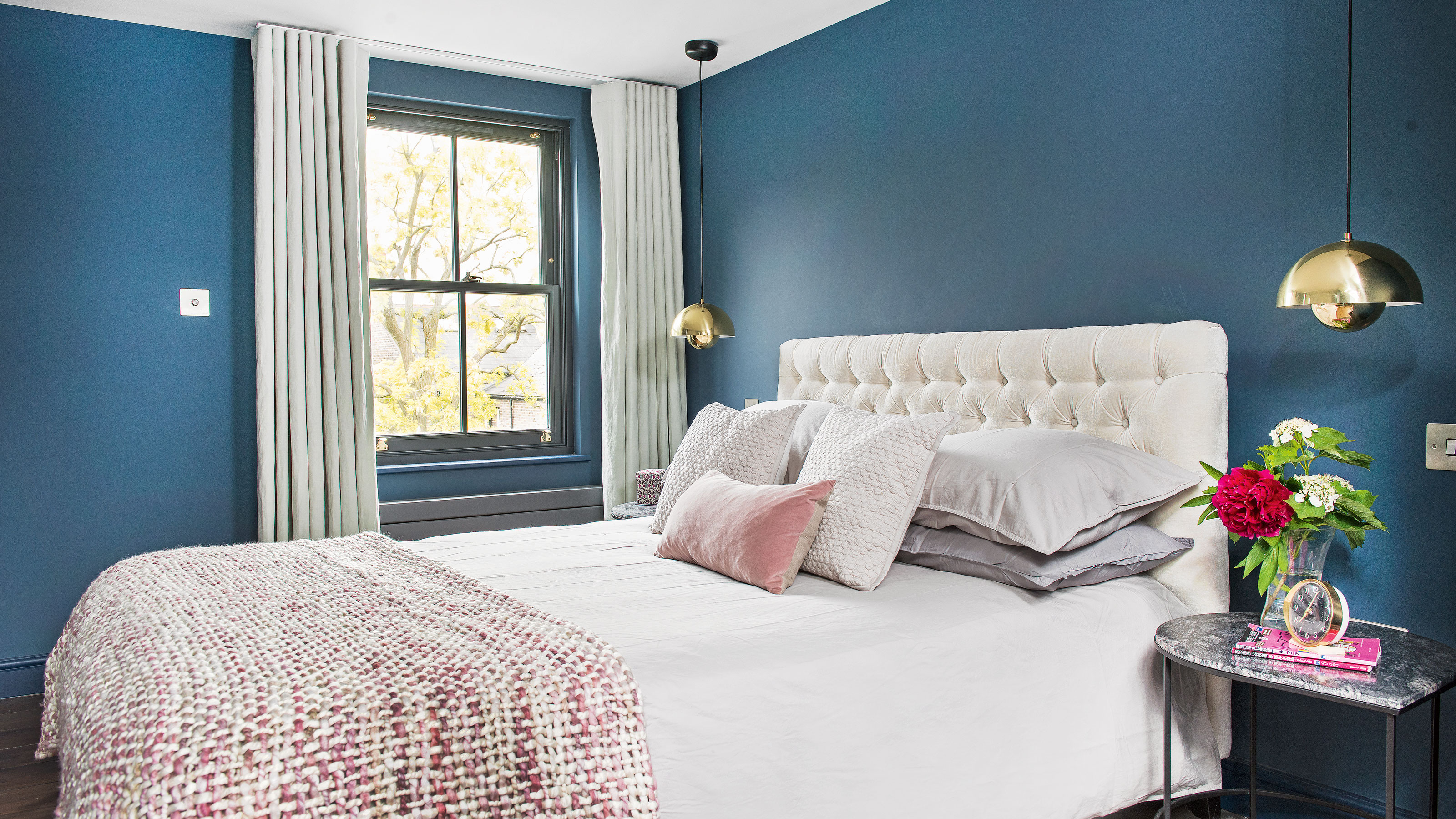
Bedroom curtains are one of the most important elements, the finishing touch if you like, that can add colour, pattern and interest to your scheme. But one of the most commonly asked interior design questions is how long should bedroom curtains be? Long? Short? Or mid-length?
Like with any bedroom curtain ideas some of it is down to personal preference – do you prefer beautiful long drapes that touch the floor or those that puddle elegantly? However, curtains also play an important part in keeping out draughts in the winter and your room cool in the summer months, these are all practical decisions that need to be considered when it comes to the length.
We delve into this tricky decision with expert advice from people in the know, because choosing the correct length for your bedroom curtains is not only about the aesthetics, but also about practicality.
How long should bedroom curtains be?
Curtain length is subjective, but there are some golden rules to follow that will help you to decide which is best for you and your bedroom ideas.
Below experts have explained the rules to consider when wondering how long bedroom curtains should be and how to decide what length curtains will look best in a bedroom.
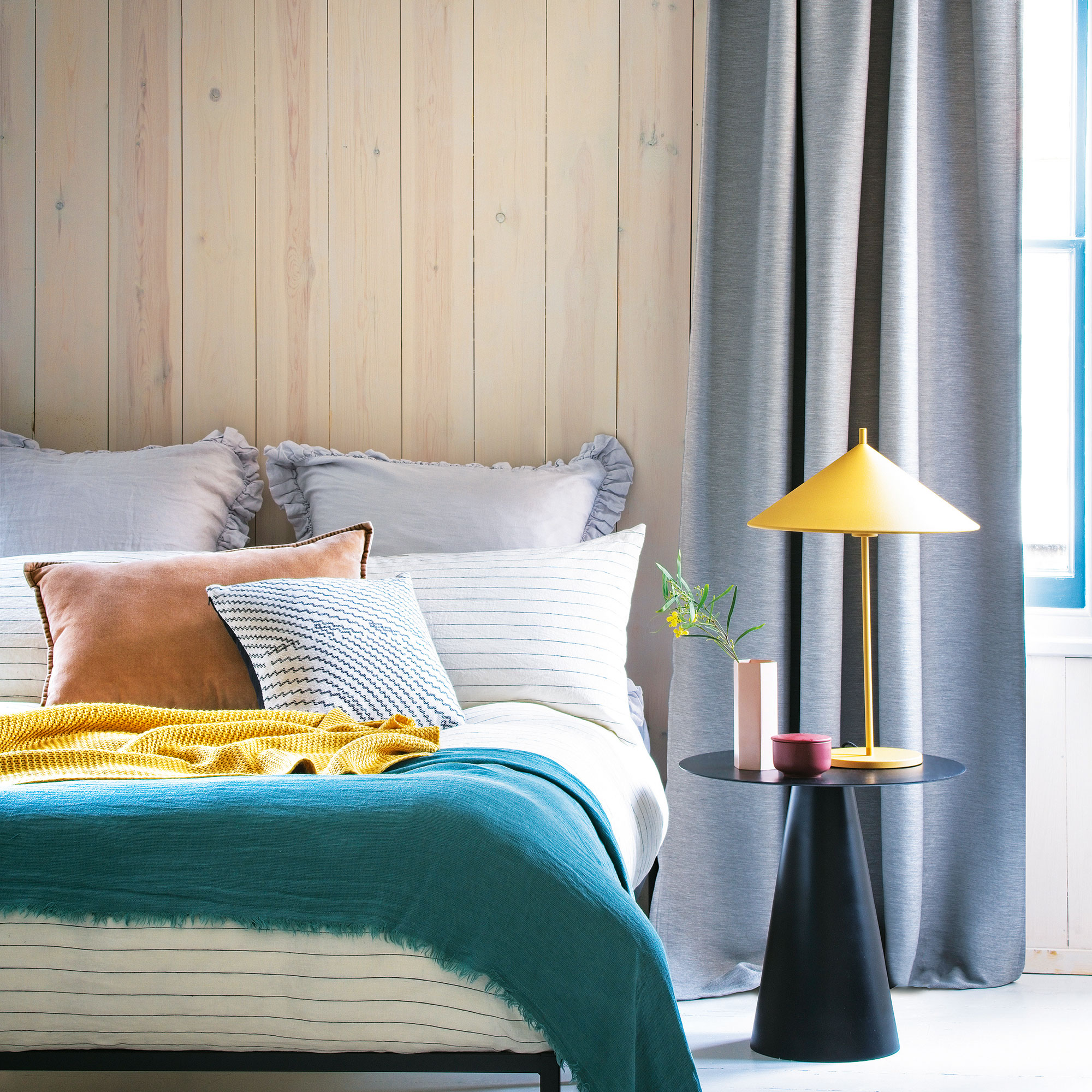
1. Bedroom curtains should touch the floor
From a design aesthetic point of view curtains always look better when they touch the floor.
'Generally, curtains that slightly brush the floor add a classic, polished look. This style prevents dust collection and avoids the awkward gap that can make a room feel unfinished,' says Lou Graham, founder of Graham & Green.
Sign up to our newsletter for style inspiration, real homes, project and garden advice and shopping know-how
'For a touch of luxury, especially with rich fabrics like velvet, allowing curtains to 'puddle' on the floor can create a sumptuously elegant appearance,' Lou adds.
2. The exceptions to the rule
There are a couple of exceptions when it's more acceptable to have short curtains, the first is if you have desk in front of your window, then the curtains can skim the top of the windowsill.
The second is radiators, though generally it's okay to have them long – keep them open while the radiators are on to allow the heat to flow, but during the night close them around the radiator. The other rule with radiators is to ensure your curtains fit neatly each side of it when open.
However, on these occasions, you might be best opting for bedroom blind ideas that can be drawn at night and layered with decorative lighter curtains on either side that you leave open.
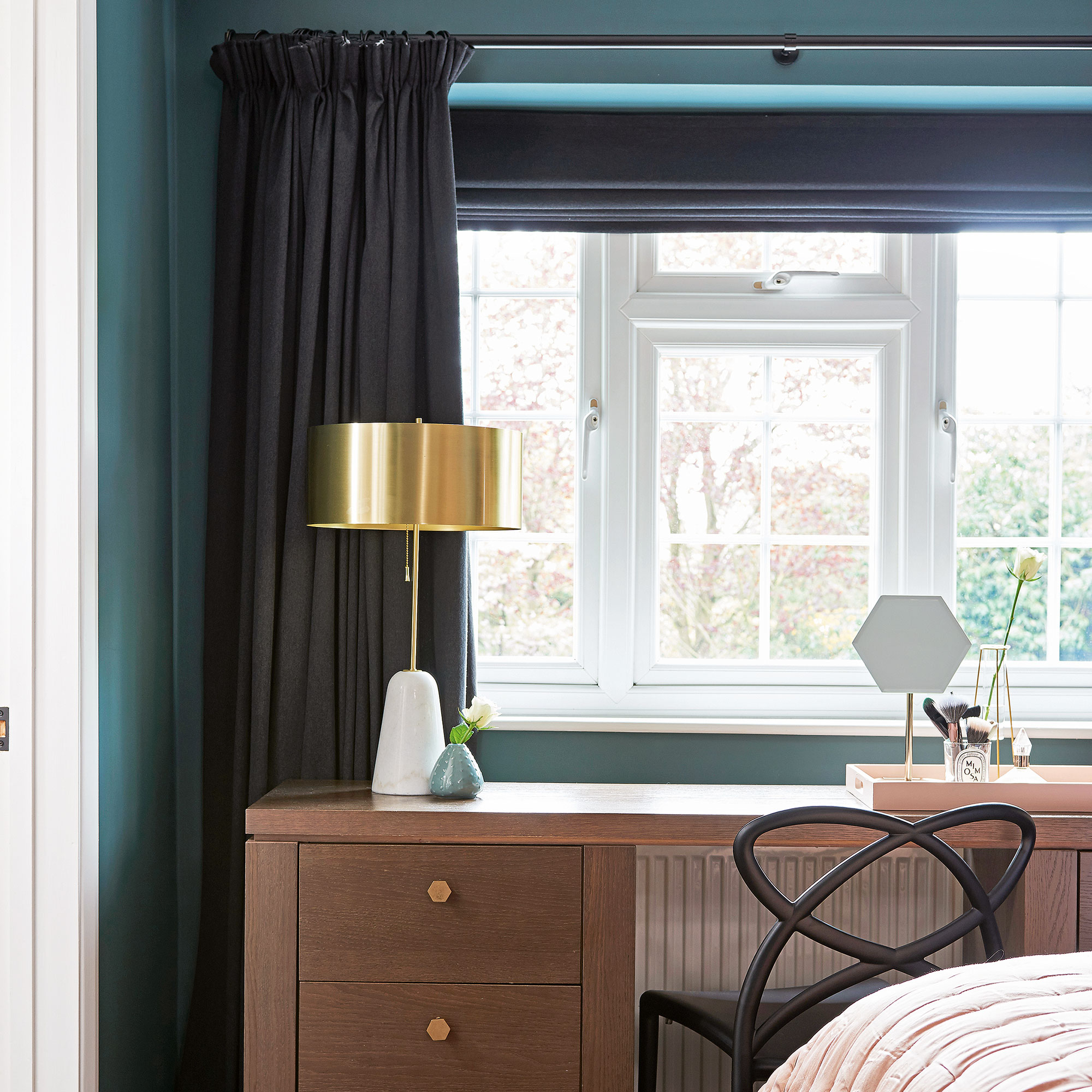
3. Decide on a flush or puddle look
Curtains that reach the floor tend to give an elegant and 'finished' look and definitely have style too. When measuring up for bedroom curtains you need to decide if you want a flush or puddled look.
‘When it comes to curtain length, measuring the drop to finish flush with the floor will create a sleek, contemporary look, whilst allowing a slight ‘puddle’ of fabric on the floor will give a more traditional feel,' explains head of design at Zulufish Caroline Milns.
Floor-length curtains will sit about 1cm above the floor to help them hang well. But for a puddle look you want to add about 1 to 2 inches, around 15 cm to the length for floor-length curtains.
However, please note if you have kids or pets running around puddled curtains might not be the best option as they are easy to trip over.
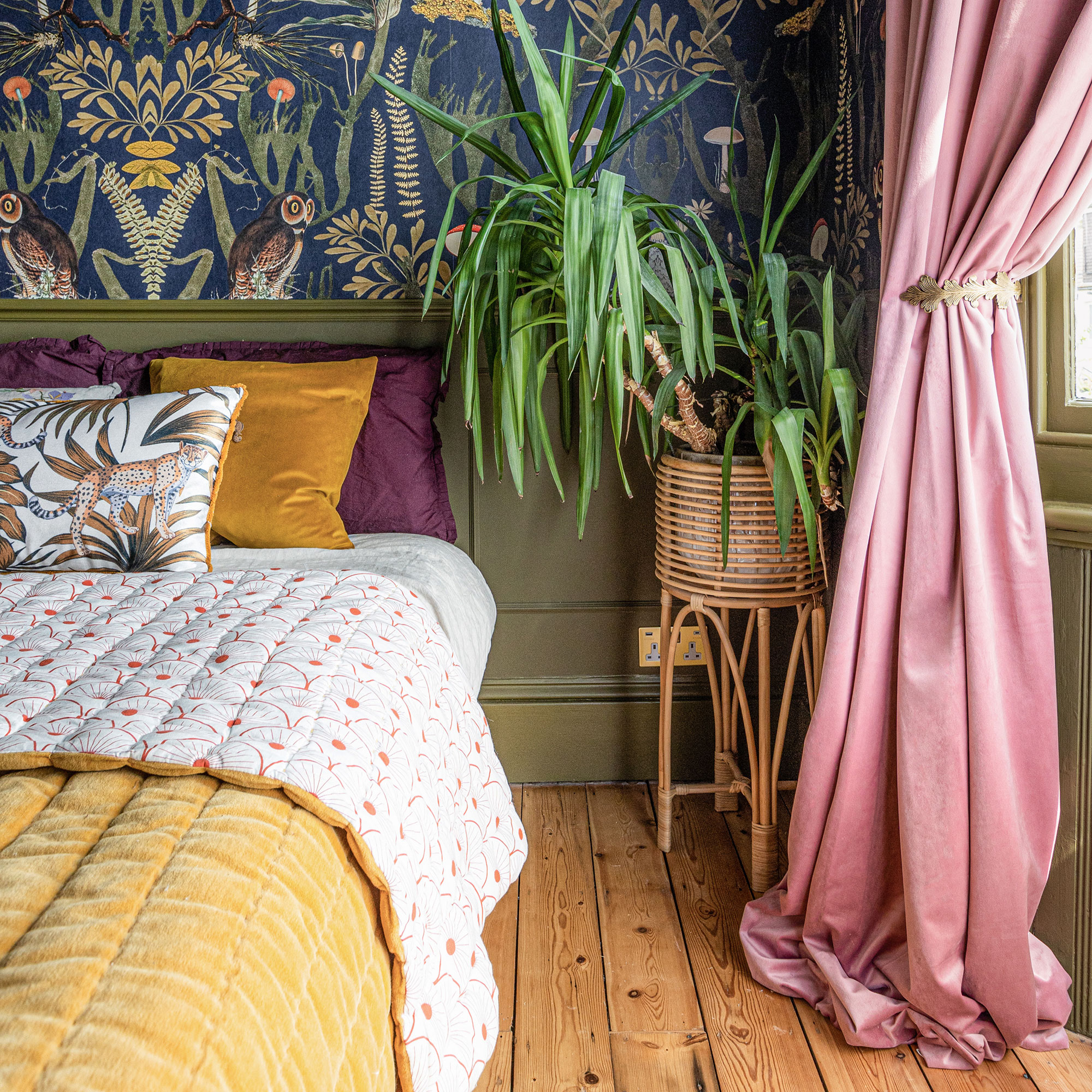
4. Allow length to hang above a window
Hanging curtains high above a window and just below a ceiling is a classic design trick to make a room and windows look bigger. Make sure when measuring up for curtains you allow for enough length to hang them as high as possible.
'Hang curtains high for a professional-looking window treatment. This will instantly give your room an illusion of extra ceiling height, emphasizing its grandeur and making the space feel very luxurious,' agrees Debbie Leigh, design manager at ILIV.
'By positioning the pole or track a minimum of 4 inches and a maximum of 12 inches above the top of the window, you not only create a sense of vertical spaciousness but also highlight the architectural feature of the ceiling.'
Caroline agrees, 'I am very keen on running the curtains into the coffers or architectural moulding, which allows the curtains to hang seamlessly, creating a constant flow of fabric from ceiling to floor. This keeps the overall appearance very pared back, so that the curtains just soften the angles of the window, creating a very timeless and elegant look.'
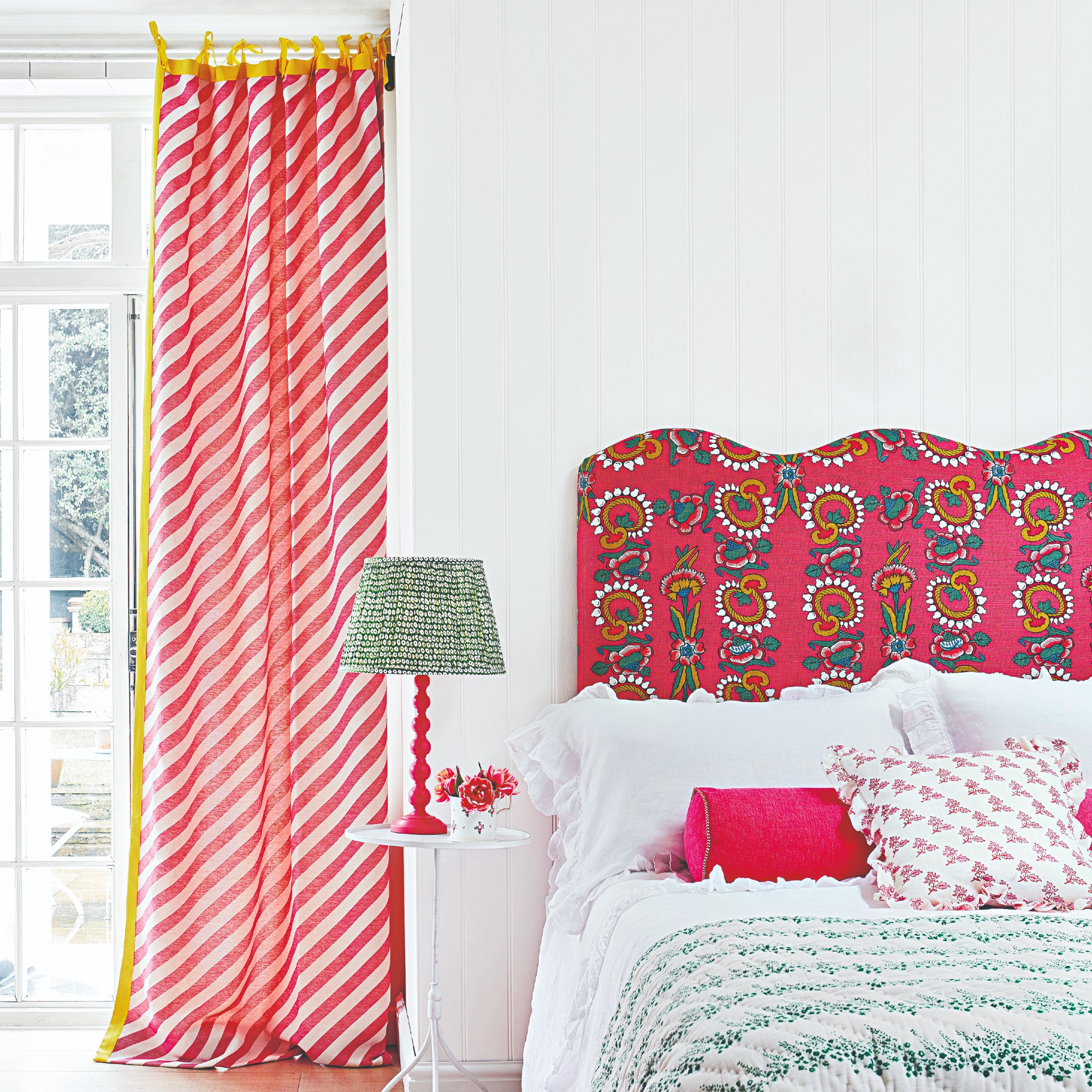
Where to buy bedroom curtains
If you are looking to invest in new bedroom curtains here are some of our favourite places from affordable ready-made curtains, to more expensive bespoke services.
- Dunelm: Our Deputy Digital Editor Rebecca Knight has a set of Dunelm's Luna curtains in her home. They're sturdy and look more expensive than the price-tag would suggest.
- Blinds2Go: If you're after a bold design try the Ideal Home Blinds2Go curtain range with prices starting at £30.
- Hillarys: If measuring curtains sounds intimidating it might be a good idea to opt for a Made-to-Measure option like at Hillary's. Measuring and fitting are included in the price if you're not confident in your DIY skills.
FAQs
How wide should bedroom curtains be?
The size of your bedroom curtains depends mainly on the effect you want to create within your space and how large the windows are and placing of windowsills.
The general rule of thumb is to measure the width of your window then multiply that number by 1.5 to 3 times – the reason this varies is down to the fabric choice, a thicker fabric won't necessarily need to be as wide, whereas a floaty voile will look better fuller.
You can also use curtains to make your bedroom look bigger – a fuller width will make them look wider, and a hanging them well above your window top will make your ceilings look higher. If your ceiling is low then choose a fabric design that's bold and beautiful, it will help to distract the eye perfectly.

What is the best fabric for bedroom curtains?
The materials you choose are key to how your curtains will drape – heavier fabrics will behave differently to lightweight voiles for example, as the weight will make the length vary, and therefore are an important consideration to how they look. In a bedroom, you should aim to use a curtain fabric that is temperature-regulating and blocks out light to help you sleep better.
'You must consider colour, fabric, length, and thickness. Dressing your windows with more substantial fabrics such as thick linens, luxurious wools or sumptuous velvets not only creates an elegant drape but also helps retain heat, prevent drafts, and guarantees privacy,' explains Hayley McAfee, head of Villa Nova. 'On the other hand, lightweight fabrics will softly diffuse light, they have an airy feel and look beautiful when draped.'

Sophie has been an interior stylist and journalist for over 25 years and has worked for many of the main interior magazines during that time, both in-house and as a freelancer. On the side, as well as being the News Editor for indie magazine, 91, she trained to be a florist in 2019 and launched Flowers Inside My Head, a bespoke floral design studio where she curates beautiful flowers for modern weddings and events.